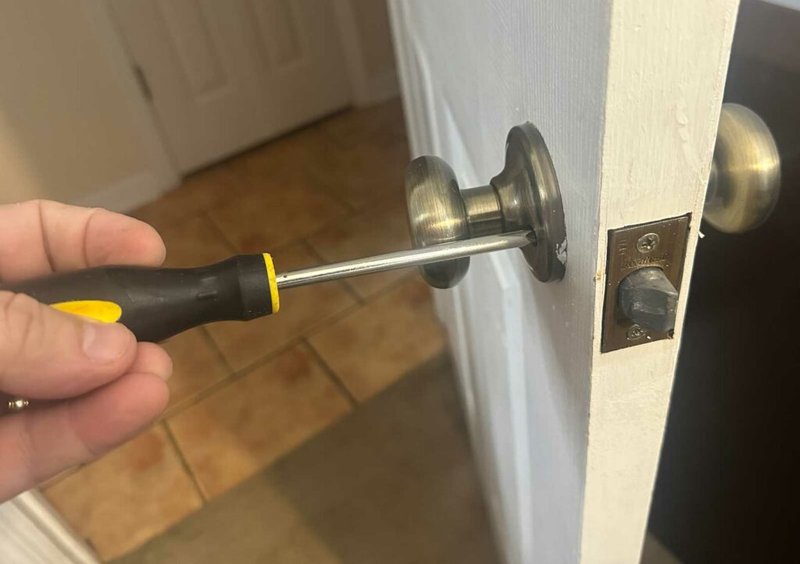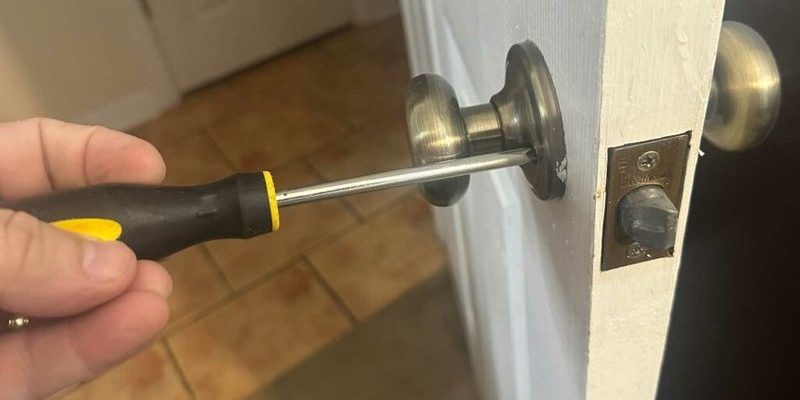
Regular cleaning and adjustment of your door latches can save you a lot of hassle down the road. Just like how regular check-ups keep your car running smoothly, giving your door latches some love can prevent wear and tear. Whether you’re dealing with a standard latch on your front door or something a bit more high-tech in a smart lock, knowing how to maintain them can make life a lot easier. So, let’s dive into some practical tips to keep your door latches performing at their best.
Why Regular Maintenance Matters
You might be wondering why you should bother with regular maintenance. After all, if the latch is working, why fix what isn’t broken? Well, here’s the thing: regular maintenance can prevent small issues from turning into big problems. Just like with your health, a little prevention goes a long way.
When dust, grime, and moisture build up in a latch, it can lead to rust or corrosion over time. This could cause the latch to stick or even break—both of which can be quite inconvenient. A latch that doesn’t engage correctly can compromise your home’s security, which is obviously something we all want to avoid. By dedicating just a few minutes every few months to check and clean your door latches, you can save yourself time, money, and stress in the long run.
Gathering Your Cleaning Supplies
Before you start, you’ll need a few basic supplies. Don’t worry; you likely have most of these items at home already. Here’s a quick checklist to get you prepared:
- Non-abrasive cleaner or mild soap
- Soft cloths or paper towels
- Small brush (an old toothbrush works great)
- Lubricant (like silicone spray or graphite powder)
- Screwdriver (for adjustments)
Having these items ready helps you get the job done efficiently. Think of it as gathering your tools for a mini home improvement project. With everything at hand, you can tackle any dirty or sticky latch issues without interruption.
Steps to Clean Your Door Latch
Now that you have your supplies, let’s walk through the cleaning process step-by-step. Trust me; it’s simpler than it sounds!
1. Remove any loose debris: Start by using your small brush to sweep away dust and dirt around the latch. This helps you see what you’re working with.
2. Wipe with a cleaner: Dampen a cloth with your cleaner (or a mixture of soap and water) and wipe down the latch. Be gentle, especially if you have a delicate finish.
3. Focus on the crevices: Use your brush to get into the nooks and crannies where dirt likes to hide. This is where grime can build up and cause issues.
4. Dry it off: After cleaning, make sure to dry the latch completely. This helps prevent moisture buildup, which can lead to rust.
Remember, cleaning is about keeping your latch functional. It’s a bit like brushing your teeth; you don’t notice the benefits right away, but neglect can lead to bigger problems down the road.
How to Adjust Your Door Latch
Sometimes, cleaning isn’t enough; you may also need to adjust your latch. If your door isn’t closing properly or the latch is catching, it’s time for some tweaks. Here’s a straightforward approach to making adjustments:
1. Check the alignment: Open the door and inspect the latch and the strike plate (the metal piece on the door frame). They should line up perfectly. If they don’t, that’s your cue to adjust.
2. Loosen the screws: Using your screwdriver, gently loosen the screws on the latch and shift it slightly as needed. Adjusting it a little can make a big difference in how it functions.
3. Test the latch: After adjusting, close the door to see if the latch engages correctly. You might need to repeat the adjustment a couple of times to find the sweet spot.
4. Tighten everything down: Once you’re satisfied with the adjustment, tighten the screws back up, ensuring everything is secure.
Adjusting your latch can feel like finding the perfect fit with a puzzle piece. It might take a few tries, but once you get it right, the door will operate smoothly.
When to Lubricate Your Door Latch
You’re probably thinking, “How often should I lubricate my door latches?” The truth is, it depends on how much use they get. If you notice a sticky latch or hear squeaking, it’s definitely time for some lubrication. Here’s a quick guide on how to do it effectively:
1. Choose the right lubricant: Silicone spray is great because it won’t attract dust like oil can. Graphite powder is another solid choice, especially for locks.
2. Apply sparingly: Spray or sprinkle a small amount of lubricant directly onto the latch. You don’t need a lot; just a little goes a long way.
3. Work it in: Open and close the door a few times to let the lubricant spread through the latch. This helps ensure smooth operation.
4. Wipe away excess: After a few cycles, wipe away any excess lubricant to avoid attracting dirt.
Regular lubrication is like putting oil in your car’s engine—it keeps everything running smoothly and prevents wear and tear.
Common Problems and Solutions
Sometimes, despite your best efforts, things can still go wrong. Here are a few common door latch problems you might encounter and how to solve them:
– Sticking Latch: If your latch sticks, it could be due to dirt buildup. In this case, cleaning and lubricating should do the trick. If it continues, check for alignment issues.
– Door Won’t Lock: This could mean the latch is misaligned or damaged. Start by checking the alignment; if that’s not the issue, you might need to replace the latch.
– Rusty Latch: A little rust can go a long way toward ruining your latch. Use a rust remover and then apply lubricant immediately to prevent further damage.
By troubleshooting and resolving these issues quickly, you can extend the life of your door latches significantly.
Final Thoughts on Door Latch Maintenance
Maintaining your door latches isn’t just about keeping them functional; it’s about peace of mind. A well-maintained latch protects your home and provides a seamless experience when entering or exiting. By regularly cleaning, adjusting, and lubricating your door latches, you’re not just preventing problems—you’re promoting lasting security and convenience.
So, next time you think about tackling household projects, consider giving your door latches some much-needed attention. It’s a small effort that pays off big time!
